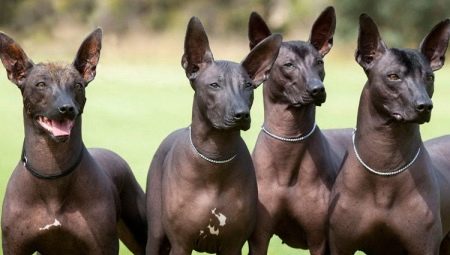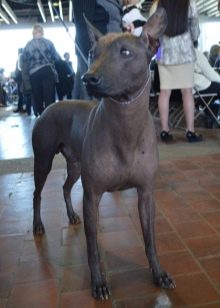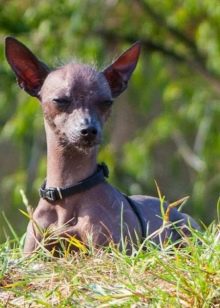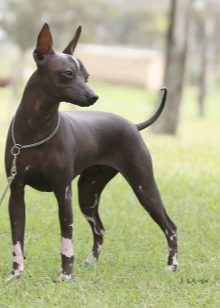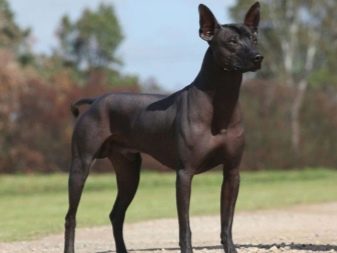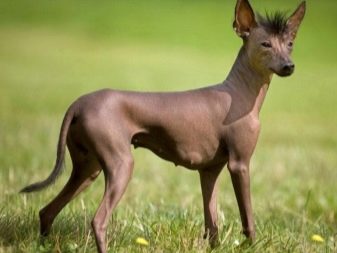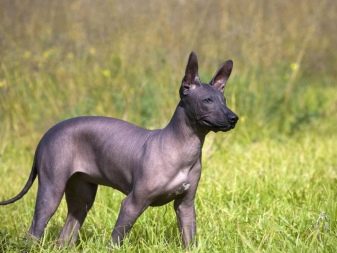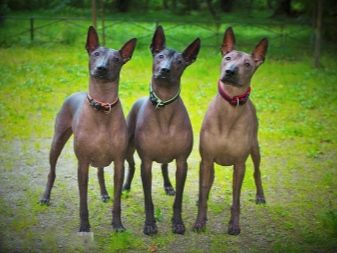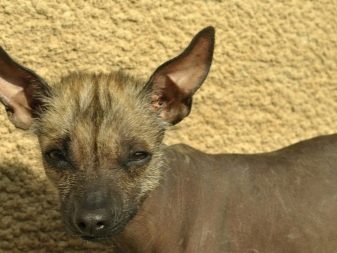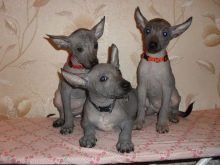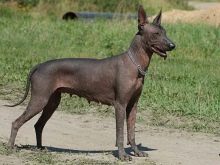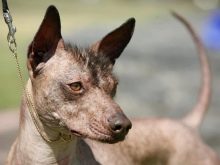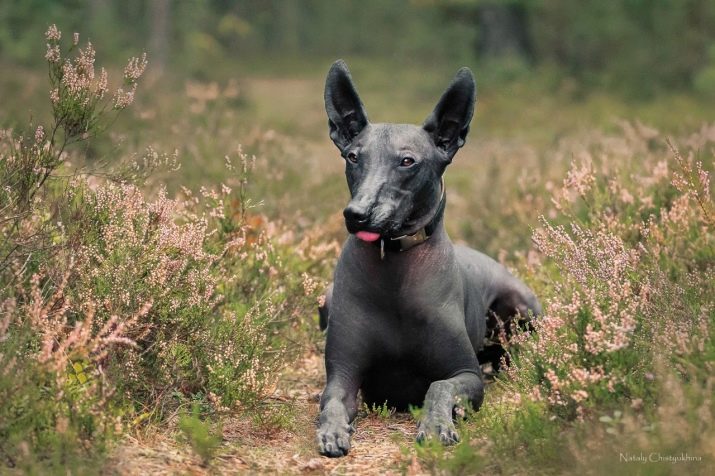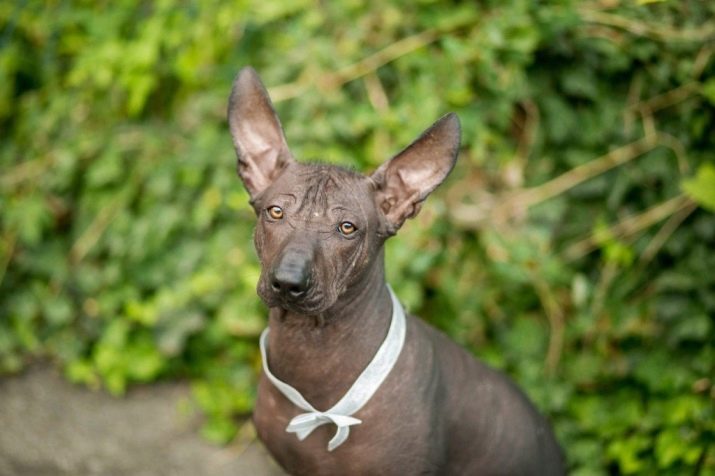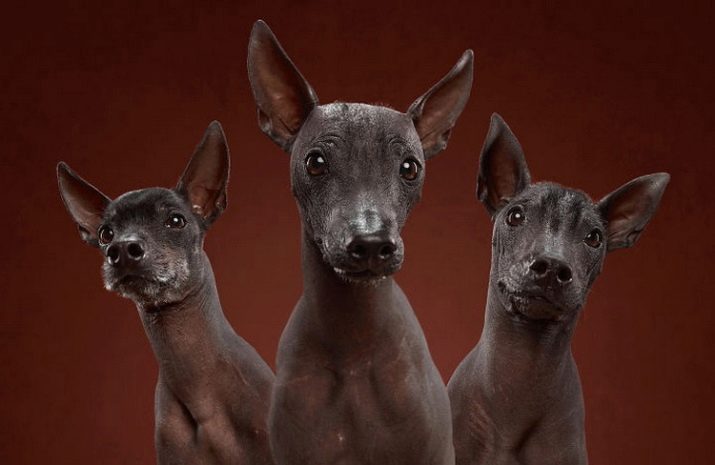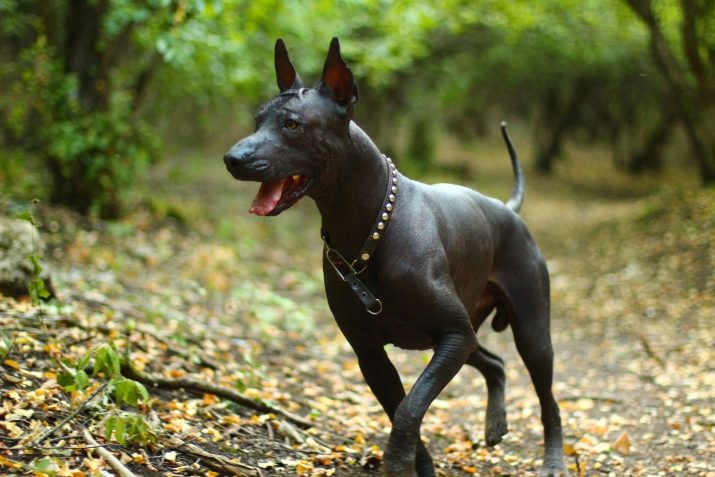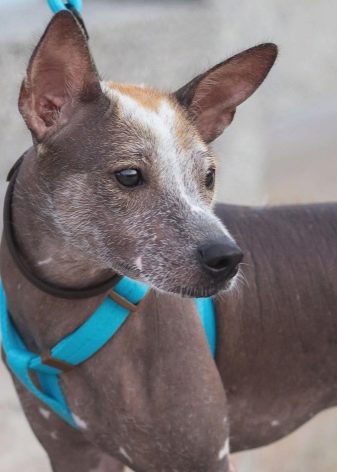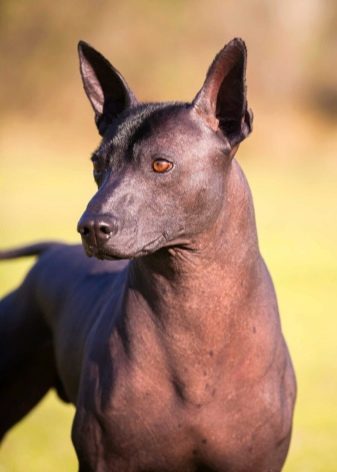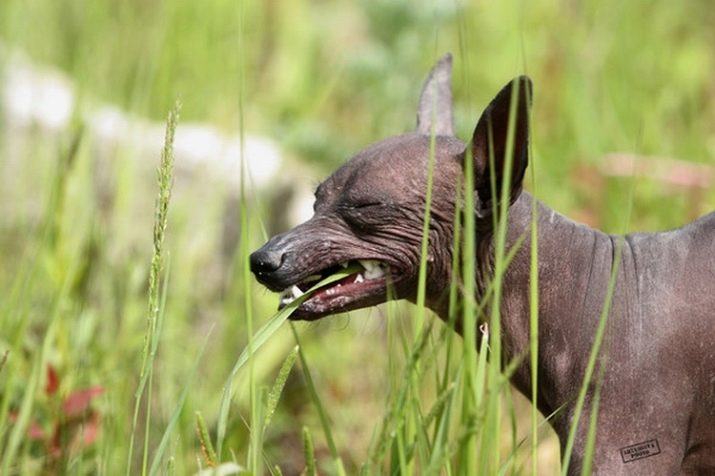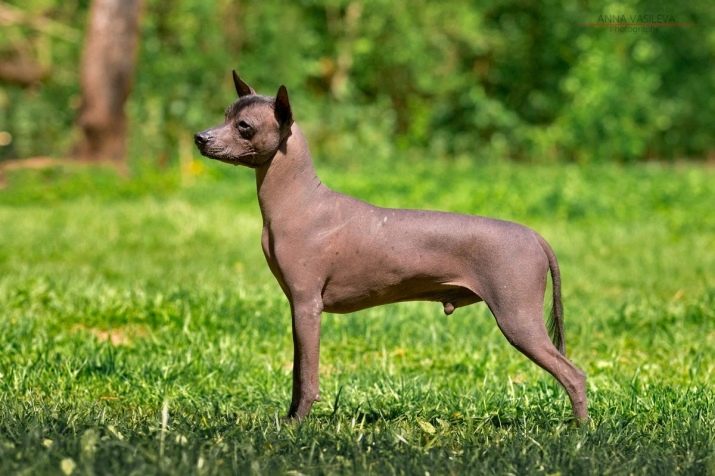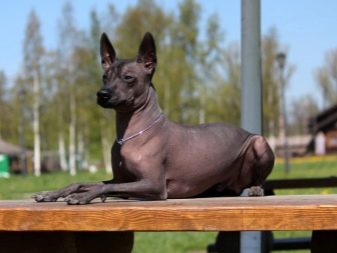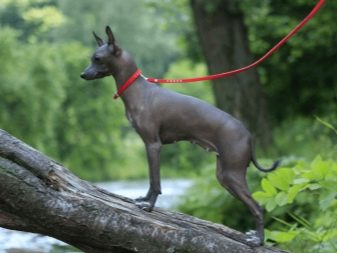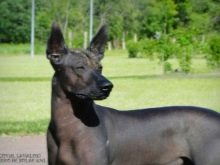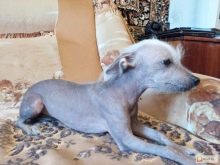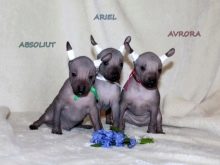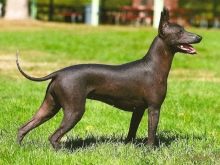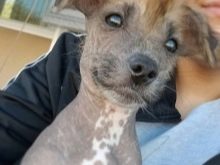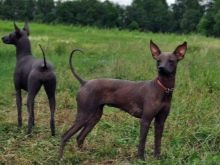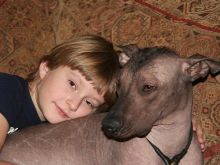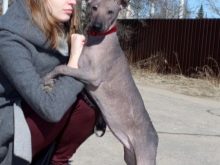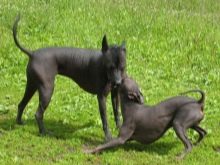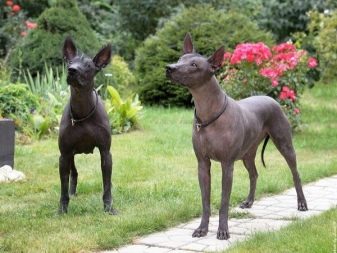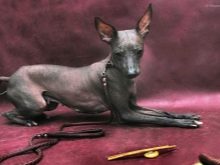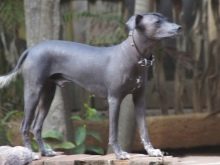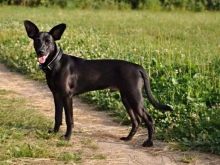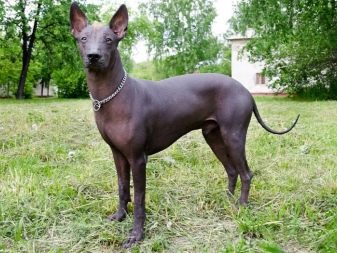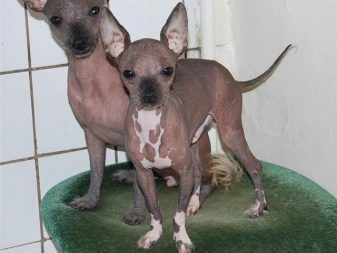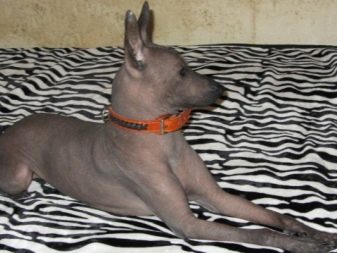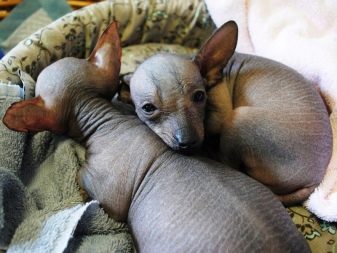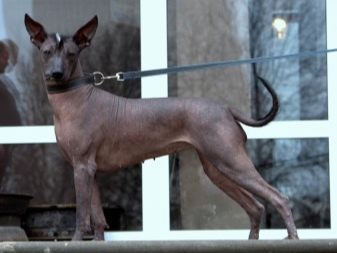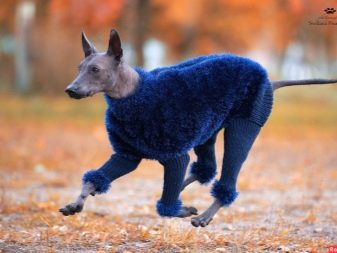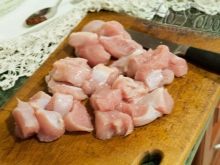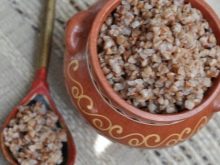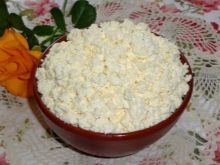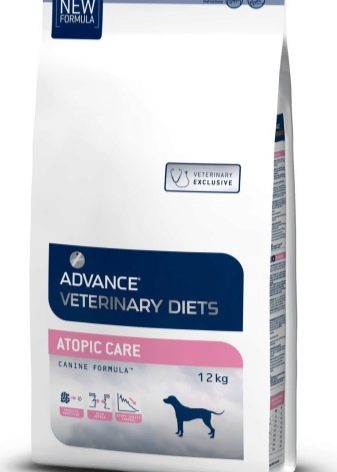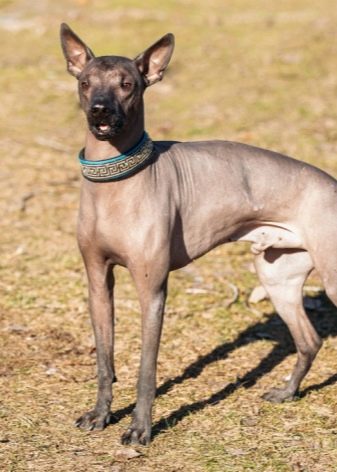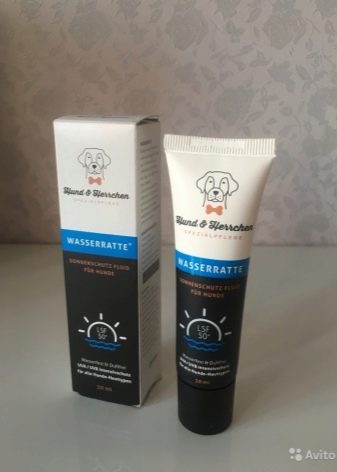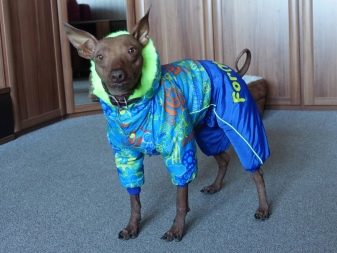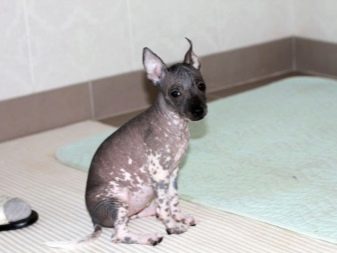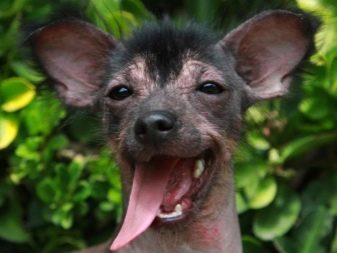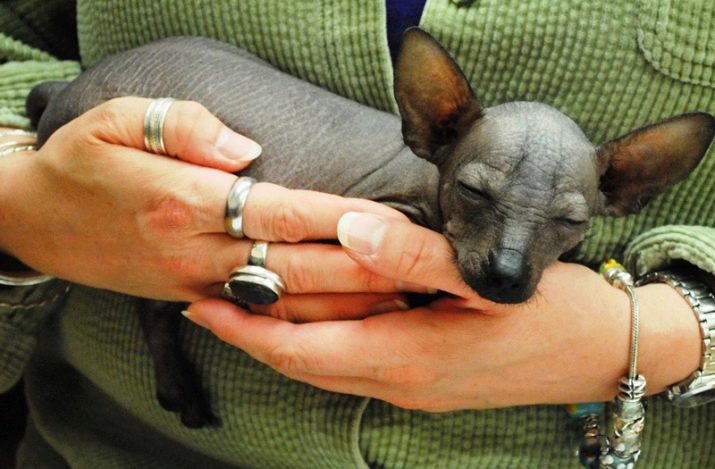Xoloitzcuintle or Mexican hairless dog is well known not only in Mexico, but also far beyond its borders. On the territory of our country, the breed is also quite popular, moreover, dog breeders, having once bought such a dog, and in the future remain true only to this breed.
History of origin
Xoloitzcuintle is a unique breed that was formed in a natural way without human intervention. Unfortunately, it was not possible to determine the exact cause of the appearance of hairless dogs, however, most scientists are inclined to the version of spontaneous genetic mutations in the population of their oldest ancestors. The forefathers of the Mexican hairless dog were brought to the American continent by pioneerswho crossed the Bering Strait and settled on the new fertile lands.
The legend has come to our day that the god Xolotl, who was worshiped by the Aztecs, sent this noble animal to the earth so that it would accompany the departed to the gates of paradise. That is why the burial of the deceased relative was accompanied by the killing of the Xoloitzcuintle, and this ritual was preserved in the Indian tribes for a long time. This fact is testified by archaeological excavations in Mexico and the United States, as well as the finding of mummified hairless dogs buried next to their owners.
Also found were xoloitzcuintla clay figurines dating back to the 5th century. BC Oe., which speaks of the special attitude of people to these dogs. There is an opinion that Mexican hairless dogs were eaten, considering that their meat has great magic power, which gives people the gift of providence. In addition, the Aztecs believed that dogs were able to heal ailments, explaining that with their hot skin.
By the way, in isolated tribes there is still an opinion about the healing power of an animal that can cure rheumatism and other diseases with the heat of its body.
The idyll of the Aztec and Xoloitzcuintle coexistence was broken by the conquistadors, who, conquering the New World, destroyed the culture and traditions of the indigenous population and imposed their way of life on it. Together with many ancient rituals, dogs that the strangers considered to be a symbol of outdated ways of life and were condemned to destruction, fell out of favor. As a result of massacres, which were often carried out in order to use animals for food, by the end of the XVI century. the population of the most ancient dogs reached a historical minimum. The breed was saved from extinction by a few of its representatives who were fortunate enough to live in remote mountain settlements of Mexicowhere the conquistadors simply could not reach.
However, the resurgent breed to the beginning of the XIX century. was again subjected to massacres, and this time purely for mercantile purposes. The fact is that enterprising Mexicans began to use the skin of dogs for sewing leather goods. This ugliness lasted almost half a century, and only in 1850 cultural figures shook public opinion and drew attention to the problem of killing innocent animals. With the help of amateur dog breeders, we managed to equip several expeditions and send them to the mountain villages of Mexico, where there were still quite a large population of bare dogs.Thanks to the surviving individuals, the first nurseries were organized, and by 1887 the breed was officially recognized by the American Kennel Club.
The fate of the breed was not easy. There were dizzying upsurges, such as the victory of a Mexican bare dog at an exhibition in 1940, and annoying falls, when dog breeders lost all interest in the breed, which is why the American Kennel Union deleted it from its registry. Dogs became less and less, and their owners almost stopped visiting the exhibition. Thus, Xoloitzcuintle was endangered for the second time, and only through the efforts of enthusiasts rose from the ashes again.
The breed is obliged by its second birth to the dog handler Norman Pelham Wright, who in 1954 again went to deaf Mexican villages and bought dozens of dogs from the Indians. Upon arrival home, he took up breeding work, during which a preliminary breed standard was formulated and a history of its origin was written.
In Russia, dogs appeared in 1986, however, they did not gain dizzying popularity. In Mexico, by contrast, the breed acquired the status of a national treasure and entered the Guinness Book of Records as the most ancient breed of the same type, and its representatives as owners of the highest body temperature.
Description
An adult xoloitzcuintle dog looks very impressive. The animal has a powerful build, graceful forms and has a rather proportional physique.
- The main feature of the breed is durable and elastic skin. It is absolutely immune to the bites of parasites and blood-sucking insects, as well as resistant to all sorts of injuries and injuries. The skin of adult dogs is very well stretched and does not form folds, and the only exception is eyebrow folds. Puppies, on the contrary, are literally riddled with wrinkles, which as the animal grows older are completely smoothed out. Skin color can be very diverse. The standard allows for yellow, black, gray, brown and nut covers, which are often present spots of a different color.
As for wool, there are sometimes a few short hairs on the forehead, tail tip and fingers, however, they are completely absent on the body.
- The head of the animal is set high and proportional to the size of the body. The skull has a wolfish type of structure, a small protrusion on the back of the head and slightly narrowed to the nose. The line of the forehead is parallel to the face, which, in turn, is characterized by smooth outlines and flat cheeks.
- The nose has a well-defined lobe, a color that is completely identical to the color of the skin cover. For example, dark-skinned dogs have a practically black nose, golden-yellow and bronze ones have coffee or flesh, and those with spotted ones are partially pigmented.
- Lips the animal is quite dry and fits tightly to the teeth.
- The ears of the xoloitzcuintle are large and long.set high, which makes the dog look like a bat. When the animal is alert, they are almost at a right angle.
- The eyes are almond-shaped. and exactly repeat the color of the skin. The most common are yellow, amber, red-brown, coffee and black shades. The eyelids are dry and dense with a clearly visible gray, black or brown edging. This gives the look attentiveness and alertness.
- Teeth in bare dogs are rather weak.joining in a scissor bite, strong jaws, full dentition desirable but not necessary.
- The neck of the animal is very elegant, smoothly expanding at the base and turning into withers. The neck is light and elegant.
- The housing of the Xoloitzcuintle is slightly elongated. and corresponds to the height at the withers as 10/9. The chest is slightly narrowed and located at the level of the elbows. The back is straight and short, with strong blades set obliquely.The loin is slightly protruding above the line of the back and has a prominent musculature. The belly is chosen, and the thin tail is decorated with an elegant tassel.
When the animal is at rest, it is lowered and slightly rounded. In motion, it rises, but does not touch the back, and when the animal is overcooling, it is pressed between the back legs.
- Limbs strong, straight and muscularwith joints pointing backwards. Occasionally on hare-type hands, there are dewclaws that must be removed without fail.
- Wool cover completely absent, although some individuals may have coarse and rare wool 2.5 cm long on the forehead and nape.
Considering the characteristics of the breed, it is impossible not to dwell on the defects. Thus, a dog may be disqualified at an exhibition for clubfoot, the presence of a tuft on its top, cat-like paws, kyphosis, too loose skin, forming numerous folds, cropped or shortened tail, round eyes bulging and drooping or stopped. Too wide head, wrong bite, wool cover on areas where it is unacceptable, testicles not descended into the scrotum, the presence of dewclaws, and abnormal behavior, which is expressed in excessive cowardice or, on the contrary, aggressiveness.
In addition, too feminine males and large females, albino dogs, as well as individuals with undeveloped muscles, pronounced suspension and light pigmentation of the iris are considered a defect. However, owners of individuals that do not meet the standard characteristics should not be discouraged, since any xoloitzcuintle dog can get a “zero” pedigree. As for the cost of puppies of this rare graceful dog, it starts from 10 thousand and ends with 150 thousand rubles (2019).
For the minimum price you can buy a puppy, partially compliant with the standard and belonging to the pet-class, while for the elite representative of the breed, which has an impeccable pedigree, you will have to pay very expensive.
Character
Xoloitzcuintle has a balanced character and a calm disposition. Dogs are easy to learn and are quite suitable for a beginner breeder as the first pet. A characteristic feature of naked dogs is a developed sense of ownership, because of which they are especially reverent about their things - toys, sleeping area and a cup of food. In addition, they are considered monogamous and choose one of their family members as their host. The pet will also communicate normally with other households, but the leader will be recognized only in one person.
Mexican hairless dogs are considered good guards and watchmen, warning the owner about the dangers of unconventional behavior. The dog will spin and bustle around the owner, however, it will not give a vote. Such a model of dog behavior during the visit of uninvited guests is very convenient for families with children and elderly people who will not be woken up by a loud bark if someone suddenly knocks on the door. Dogs feel reserved feelings towards strangers, however, they do not show obvious aggression. But if the animal sees that the owner or one of the members of the household is in real danger, then it will immediately defend them.
As for relationships with other animals, zooagression is sometimes found in adult xoloitzcuintle. However, it is aimed exclusively at unfamiliar animals, and within its family the dog peacefully gets along with other dogs and cats. Another feature of the character of Mexican hairless dogs is excessive obsession, which is due to the pet's desire to take an active part in all the affairs of the family. The dog is immensely happy when the owner takes it with him, and terribly grieves when left alone in the apartment. Therefore, such a breed is not suitable for constantly absent owners, because it tolerates loneliness very badly and starts howling.
The solution to the situation can be the purchase of another naked dog, with which the pet will quickly find a common language and will play while the owners are absent. As for the attitude towards children, Xoloitzcuintle is good with them and is happy to take part in all their undertakings. However, the instinct of "nanny" in these dogs is absent, so they need socialization in relation to children from an early age.
Also of note is the high level of intellectual development of hairless dogs, their unlimited loyalty and devotion to their family.
Lifespan
Mexican hairless dogs live from 12 to 15 years, and the duration of their life depends on the conditions of detention, the emotional state of the animal and the presence of hereditary and acquired diseases. Dogs of this breed are characterized by frequent allergic reactions and dermatitis, which are the result of malnutrition or care. In addition, due to the lack of woolen cover, the skin of dogs is sometimes injured while walking in the woods and playing with other dogs. For the same reason, sunburn is often observed on the skin. Therefore, despite the fact that the breed is from sunny Mexico, dogs should be kept outside in the street under the scorching rays of the sun.
Also among the most common diseases include cartilage weakness, which is expressed in drooping ears, as well as loss of teeth and the formation of an unhealthy, foul-smelling plaque on the skin. If the symptoms described are found, the animal must immediately be shown to the veterinarian, who will determine the cause of the disease and prescribe treatment.
In general, as with most breeds of natural origin, xoloitzcuintle is characterized by good health and excellent immunity, and most diseases are associated with a violation of the conditions of the animal.
Kinds
Xoloitzcuintle classification occurs by two criteria: the presence of wool and size. On the first sign, absolutely bald, often having a small tuft of hair on the head and short-haired individuals are distinguished. Hairless crested dogs have in their genotype a “hairless” gene, which spontaneously mutated at the dawn of the breed's origin. Such mutations are not uncommon in nature and are often found in cats and rats.
Short-haired individuals form a numerical minority in their litter and are born as a result of the work of the genes responsible for the undercoat and in a recessive state. The presence or absence of wool is directly related to the state of the teeth, which is why bald dogs do not have premolars and often incisors are missing. Shorthair representatives of the breed have teeth in the complete set. The rest of the naked and downy individuals are identical and have no fundamental differences from each other.
According to the second criterion, differences (size) Mexican naked dogs are standard, medium and miniature. The first type includes individuals 46-62 cm tall and weighing from 9 to 19 kg. The second group is represented by dogs of 36-45 cm tall and weighing 6-12 kg. The third type includes mini dogs with a height of 22-35 cm, weighing no more than 8 kg.
In the process of evolution of the breed, there is a certain tendency to a gradual increase in height and weight to representatives of the miniature and average types, despite the fact that with standard representatives height and weight remain constant over several centuries.
Conditions for content
Xoloitzcuintle are exclusively domestic dogs and are strictly not suitable for street content. Mexicans are recommended to start people who are prone to allergic reactions to animal hair, as well as families where there are young children and the elderly. Dogs are good because they do not emit the smell of dog, which is present to one degree or another in almost all dogs.
From the first days of the puppy's appearance in the house, it is necessary to arrange a bed for it and equip a place to eat food. To do this, you need to purchase or make your own soft warm mattress and place it away from heating devices and drafts. Additionally, you need to prepare a blanket, which will be required at first, while the puppy is still small. However, adult dogs are also often sheltered, especially during the off-season in the absence of central heating.
An important condition for keeping a pet is walking. Walking with a Mexican should be from 4 months of age, after all the necessary vaccinations have already been put down. Take out the pet at first should be as often as possible - preferably after each meal and at night. Xoloitzcuintle quite quickly understand what is required of them, and by the age of 7 months they begin to go to the toilet outside.
When the weather is good, it is recommended that you walk the dog for at least an hour, and it is better to postpone the walk in extreme cold. Pet should be dressed for the weather and be sure to have clothes for all occasions in the wardrobe.
What to feed?
Xoloitzcuintle is a carnivorous animal, so half of its diet should be meat and offal. But considering the fact that a few teeth are missing in bald dogs, the meat component should be given in the form of minced meat or canned food. The rest of the food also needs to grind to a mushy state. However, this should be done only if the pet has 6 or more teeth, in other cases it is necessary to give solid food to the animal. It is desirable to cut the meat into small pieces.
When preparing the menu for xoloitzcuintle, it should be taken into account that 70% of it should consist of high protein food. If you plan to feed the animal with natural products, then it is desirable to include turkey, lamb or rabbit meat in the menu, as well as lean sea fish, previously cleaned of bones. It is also necessary to give porridge, fresh and boiled vegetables and seasonal fruits, with the exception of citrus fruits. A couple of times a week should be included in the diet low-fat cottage cheese and sour cream.
When calculating portions for a pet, it is necessary to remember that xoloitzcuintle are prone to overeating, so it is advisable to strictly control the amount of food and not feed the animal from the table.
However, the most serious problem faced by owners of Mexican hairless dogs is their susceptibility to allergic reactions to many products. These include beef, chicken, some river fish, eggs, soybeans and sugar. In addition to these products, the dog should not be given fatty, spoiled and expired food, smoked foods, pickles, spices, baked goods, foods high in carbohydrates and artificial additives, legumes, mushrooms, tubular bones and potatoes. As a food supplement, Xoloitzcuintle should receive bone meal, fish oil (with caution) and vitamin-mineral complexes.
However, dogs that are prone to allergies are more likely to be fed with premium-class adapted feeds, in which all the necessary elements are in optimal quantities and acceptable combination. Choosing feed, you should be guided by the size of the animal, as well as its age and activity.
For any type of food, a Mexican should have free access to fresh drinking water.
How to care?
Due to the absence of coat, care for a naked Mexican dog is quite simple. Bald animals do not suffer from parasites, do not need regular combing and frequent washing. In addition, Xoloitzcuintle does not fade and does not smell. Therefore, the main object of care for such dogs is the skin. It is necessary to wipe it weekly with a damp cloth and periodically lubricate it with a special moisturizer that you should buy at the pet store.
Besides, Pet skin should be protected from direct exposure to ultraviolet radiation and not allow the dog to be in the sun for a long time. Before the walk, it is recommended to lubricate the body of the animal with sunscreen, which, upon returning home, must be carefully wiped with a damp cloth.
This is especially true of blue, yellow and other light-skinned representatives of the breed, whose body is most vulnerable to the sun's rays.
In winter, the animal should always be worn in a warm jumpsuit, even if you plan to take him literally a couple of minutes to the toilet. Wash naked dogs once every 3 months, as more frequent bathing can cause dry skin caused by the loss of the protective layer. The skin of Mexicans must be regularly moisturized. As a moisturizer, you can use olive or almond oils with the addition of vitamins A and E. Shorthair representatives Xoloitzcuintle are combed with a soft brush a couple of times a week.
In addition to skin, teeth, ears, and pet eyes need care. To clean the teeth, the dog needs to buy chewing toys or give cleansing food, however, the best option is a classic weekly cleaning with special pastes and brushes. Ears of an animal should be regularly inspected for redness and discharge, and if necessary, cleaned with sanitary napkins and hydrogen peroxide. The eyes also need regular removal of discharge with a wet swab and chamomile decoction. If pus or excessive discharge occurs, you should immediately show the dog to the veterinarian.
The claws of the animal should be cut as soon as there is a characteristic knock on the floor, and inspect them after each walk for injuries. In rainy weather, before the walk should be placed at the front door basin with hot water. During the walk, the water cools down to a comfortable temperature, which will allow you to wash off the wet sand and dirt from your paws right after returning.
Xoloitzcuintle owners often face an unpleasant phenomenon: education on the body of pet acne and black dots. This is considered normal for puppies up to 8 months and cleaned with an abrasive scrub and lotion.
The appearance of a rash after the age of one year already speaks of an allergic reaction of the body to improper diet or about vitamin deficiency.
Upbringing and training
Due to the high intelligence and innate focus on the person, raising xoloitzcuintle is a completely solvable task, even for a beginner. The only thing that should be considered when training is the stubbornness and willfulness of some individuals, especially males. Therefore, you should not treat an equal breed with a pet. It is necessary to show the puppy from the first lesson who is the boss in the house and make him obey. Otherwise, the dog will grow up naughty, and call it to order will be quite difficult.
Start raising a pet should be with its socialization. For this puppy as early as possible to display in people, to acquaint with other animals and children. Very soon the little Xoloitzcuintle will stop being afraid of loud noises, the noise of vehicles and large crowds of people. In the future, this will help to avoid problems when a dog is in society and will make it safe for others.
You can teach a Mexican simple commands yourself, using the classical scheme of encouragement and punishment. The only thing that needs to be clearly understood is that in no case can you beat a pet. If the dog indulges and does not want to carry out commands, then a loud shout and a strict look will be quite enough: The xoloitzcuintle is a very intelligent dog and will immediately understand that the owner is not happy. The general course of training for a Mexican is necessary, especially for aggressive animals, which will be much easier for a professional to cope with.After the start of classes, it is important not to skip workouts and not stop them even in cold weather. The dog should only be dressed warmer and a little less time spent training.
Naked dogs can not be allowed to fight with other dogs, and when the conflict is maturing, you should immediately breed the animals and take them on leashes. This requirement is due to the fact that the bare skin of a Mexican can be damaged in a fight, which will lead to the appearance of ugly scars.
It is also desirable that all family members take part in bringing up the pet in varying degrees, otherwise the dog will single out one owner from the family and will only obey him.
Popular names
When choosing a nickname for a Xoloitzcuintle puppy, you should take into account that any name will not work for dogs with such an extraordinary appearance. It should be beautiful, noble, and further emphasize the extraordinary pet. The task is much simpler when a dog is acquired in a pedigree kennel, in which it has already been given a name according to the pedigree and the merits of its ancestors along both lines. In this case, if necessary, the nickname is reduced to a one- or two-syllable form, and the puppy is taught to it.
If the baby’s name was not given or only the first letter of the nickname was indicated, then the boy’s pet can be called Amigo, Angel, Basco, Benito, Burito, Grand, Graf, Diego, Hidalgo, Calypso, Carlos, Manuel, Mateo, Miguel, Nestor, Oswald, Oscar, Pecos, Real, Ricky, Sebastian, Tamale, Chavez or Charo. The girl can also be called Aya, Bonita, Gringo, Dorothea, Zara, Isabel, Camila, Consuela, Mariachi, Manuel, Martha, Nayda, Olivia, Paulina, Rosarita, Hanoi, Hymena and Esperanza.
Xoloitzcuintle is a rather exotic dog and attracts the attention of others. However, it is impossible to start a pet only because of an extraordinary exterior: the Mexican requires a sufficient amount of attention and claims the role of a full member of the family.
To buy a puppy does not turn out to be a disappointment, you should buy xoloitzcuintle only in pedigree kennels or from professional breeders. And then the baby will not deceive the hopes placed on him and will grow up a loyal friend and reliable protector.
For more information about the features of the breed, see the following video.
